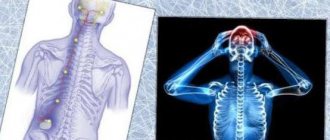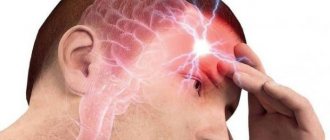“Everything in a person should be beautiful: words and thoughts, soul and body,” said the classic.
Keeping yourself in shape is a laudable decision, but everything is good in moderation. Anorexia, despite the widespread attention paid to it, continues to take root among the young population of the Earth. The disease, in most cases, affects people from 10 to 40 years of age, mostly females. There are several types of disorder that occur for different reasons. The most common form is anorexia nervosa or anorexia nervosa, which is based on a mental imbalance in the patient's life.
Leading criteria for the disorder
The main symptom of anorexia nervosa is conspicuous thinness. This is not a slender body at all, but an emaciated body with an imbalance of proportions. At the same time, a thin person does not mean anorexic. The cause of weight deficiency may be constitutional characteristics or a somatic disease, as well as other mental deviations from the norm.
It turns out that thinness alone is not enough to diagnose anorexia nervosa. There are certain criteria for symptoms and signs that help determine the presence of a disorder:
1. Body weight deficiency is 15% or more of the physiological norm. Lack of weight from height in the period preceding puberty. 2. Lack of weight is formed solely by the behavior of the patient himself during the restriction of food intake. Initially, a person refuses only high-calorie foods. Gradually, the range of prohibited foods expands, reaching the point of absurdity, a very strict restriction. 3. Application of procedures to help cleanse the body:
- laxatives;
- diuretics;
- excessive exercise;
- cleansing enema;
- inducing vomiting;
- taking appetite suppressants.
4. Obsessive fear of obesity.
He considers weight gain unacceptable, even if the weight is below normal. With further weight loss, fear persists, even hypertrophies. 5. Cessation of menstruation in women - absence of three menstrual cycles in a row. Decreased libido. 6. Delayed onset of puberty for teenage anorexia nervosa - absence of menstruation, undeveloped mammary glands in girls. In boys, the genital organs remain undeveloped. 7. Dysmorphophobia is a distorted perception of one’s own body or its individual parts. The first mention of anorexia dates back to the 17th century. Then doctor Richard Morton described an 18-year-old patient suffering from poor appetite and indigestion. The girl was depressed and looked pale. The doctor noted that the patient looked like a skeleton covered with skin, “her flesh became loose and flaccid.” The girl had been suffering from the disease for two years. She asked for help due to frequent fainting. Morton called this condition nervous consumption.
Russia learned about the disease in 1894, when the famous pediatrician A.A. Kisel described a case of hysterical anorexia in an 11-year-old girl.
Eating is fun
Not only the food itself is important, but also the atmosphere, surroundings, presentation, and company. Invite people you enjoy and cook something you love. “Do this even if you can’t see each other in person. Have a virtual meeting, advises Moore. “For example, if you usually go out to lunch with your girlfriends, but now you can’t, make tacos with a Margarita or French toast with Mimosa, as if everything is as usual.” This will help restore pleasant associations with food.
Instagram content
This content can also be viewed on the site it originates from.
Reasons for the development of anorexia nervosa
Anorexia nervosa is based on psychological factors. First of all, this refers to acute stress exposure. Among the common provocateurs are:
- violence;
- death of a loved one;
- divorce;
- loss or change of job.
Stress gives rise to a feeling of anxiety and instability in a person. In some cases, patients imagine that they are losing control. In such a situation, controlling food intake becomes a suitable replacement option.
If we approach the occurrence of the disorder from the other side, then it is definitely worth mentioning the requirements and limits established by the environment. In the modern world, thinness is held in special esteem, which forces women (sometimes men) to resort to extremes.
Annie, 19 years old. The disease first appeared at the age of 14. It all started with giving up carbohydrates and engaging in intense physical activity. Following fashion trends, the girl set beauty parameters for herself: the absence of fat. Her goal at that time was skinny legs and a flat stomach. Now the patient’s mind was occupied by only a few things: counting calories, the length of training. This took all my strength; there was no energy or time for other things.
The thought that Annie managed to maintain a “proper” diet all day brought pleasure. The rest was of little interest. Even meeting with friends was not enjoyable.
Relatives were concerned about the girl’s condition and forbade her to train. Then she began going to the gym secretly. Annie masked her reluctance to eat with illness. The girl began to think that she needed the help of a specialist when she developed amenorrhea.
The question arises: why are some people able to withstand the pressure of circumstances while maintaining self-control, while others are not? The answer is simple: it's all about predisposing factors.
The family environment plays a special role. If a family member suffers from an eating disorder, the risk of developing it increases for other members, especially girls. The situation is also aggravated by loved ones with depression, alcohol and drug addiction.
It has been established that in disharmonious families, where parent-child and parent-parent relationships are quite complex, where misunderstanding, lies, and indifference reign, fatal cases of anorexia are most common. The reason is a late request for help. As a rule, in such a family the phrases are heard many times: “I promise, I will eat,” which are blindly believed.
During the research, scientists noticed that in a large number of cases, people with anorexia nervosa lived with overprotective mothers. In such a situation, the child lost the ability to psychologically separate from his mother. Since adolescence is a time of establishing one’s own self, distinguishing the child as an individual, during this period anorexia nervosa becomes an unconscious way to isolate oneself from an overprotective mother, no matter what the cost. In this case, by destroying your own body.
On the other hand, the desire for pathological thinness may express an unconscious desire to maintain a connection with father and mother. The girl subconsciously believes that thinness will not allow her to turn into a mature woman, and she will remain the little, beloved girl of her parents.
Age is also a fairly significant factor for the disorder. As already mentioned, teenage girls, as well as females under 40 years of age, are more susceptible to the disease. Recently, there has been a tendency towards a decrease in the age of manifestation of anorexia nervosa: there are cases where girls as young as 9 years old were affected by the disease.
Increased attention is paid to personality traits. Among the dangerous personality characteristics are:
- excessive punctuality;
- assertiveness;
- accuracy;
- pronounced pride;
- low self-esteem;
- avoidance of responsibility;
- comparing oneself with others;
- ignoring one’s own desires, living by someone else’s rules;
- inability to cope with difficulties;
- hysteria;
- lack of flexibility in character;
- the desire for perfectionism. “I strived to be the best in everything. Constantly comparing myself to others, experiencing chronic stress. All my thoughts were consumed by thoughts about weight and food.” This is how Maria tells her story. It brought great pleasure to the girl to see that she was slimmer than her friends. Against this background, the patient continued to lose weight, which led to the development of anorexia nervosa.
A genetic predisposition is also possible. The serotonin receptor gene and the neurotrophic factor gene are considered susceptible to anorexia nervosa. They regulate eating behavior and the level of neurotransmitters, fluctuations of which can also cause disease. Predisposing factors such as stress, a certain personality type, combined with susceptible genes may well trigger the development of the disorder.
It’s a shame, but a large number of cases of anorexia among teenagers arise against the backdrop of comments made to them about excess weight and disproportionate figure.
Nadezhda, 16 years old. The reason for losing weight was ridicule from classmates at school. Then the girl had a desire to look perfect. The “marathon” for losing excess weight began with proper nutrition, which I adhered to for three months. As a result, I lost 7 kg. But her classmates did not leave Nadya alone. The girl tightened her food restrictions and adhered to the strictest diets. The overall result is that from 65 kg with a height of 172 cm, I lost weight to 39 kg in 9 months. It all ended in a hospital bed.
What to feed an elderly person with no appetite
There is no simple answer to this question. Each person is individual, and must first undergo an examination to detect the root cause. The minimum set of diagnostic procedures should include a detailed blood and urine test, MRI, ultrasound, gastroscopy and x-ray. Based on the results of the examination, treatment should be prescribed by a specialized doctor. In some cases, the prescription of antibacterial drugs, insulin or hormone replacement substances can help.
There are also special medications that increase appetite in older people. As a rule, these are iron supplements, various digestive regulators, anabolics, dietary supplements, and so on. Selection and appointment are always individual.
It must be remembered that you should not take medications without a prescription from a specialist, as they all have side effects. Self-medication can lead to serious consequences, not bringing the desired result, but only aggravating the situation. Some cases are emergencies. If an elderly person has some serious diagnosis and there is no alternative to treatment, he may be prescribed surgery or chemotherapy.
As mentioned above, appetite may disappear as a result of mental disorders or depressive conditions. In such cases, a psychiatrist should work with the patient and prescribe him sedatives, stimulants or antidepressants. Today, drug treatment is being actively replaced or supplemented by non-traditional treatment methods. This could be physical therapy, hypnosis or acupuncture. If we are talking about senile dementia in progression, which is often accompanied by a complete refusal of food by an elderly person, a gastronomic tube can be used to introduce nutrition.
If a person has lost his appetite, he is advised to take frequent and long walks in clean air, as well as exercise.
Stages of development of anorexia nervosa
In the clinical picture of the disease, 4 stages are distinguished:
- primary;
- anorexic;
- stage of cachexia;
- stage of extinction of anorexia nervosa.
The primary stage begins development with the formation of a persistent, overvalued idea of excess weight, excessive obesity. It usually lasts 2-4 years. The phenomenon of dysmorphophobia becomes typical for this period. The concept includes both dissatisfaction with one’s appearance in general and with specific parts of the body: thick legs, “hanging” sides, round cheeks. The patient is in a depressed state and firmly strives to correct imaginary shortcomings.
In addition to the idea of obesity, body dysmorphophobia includes the presence of other imaginary defects in appearance: irregular nose shape, crooked legs, protruding ears. Body dysmorphic symptoms are characteristic primarily of adolescents. They are formed during the period when the child is accompanied by age-related changes in body proportions.
A teenager chooses a role model for himself, trying to match him. This could be a public figure, a literary character, or someone you know.
Patients carefully hide ideas about being overweight and attempts to lose weight.
The initial stage of the disease is accompanied by low mood, even depression, along with increased irritability, anxiety, combined with physical disinhibition.
Anorexic stage
The second stage of the disease is the actual process of losing weight. A variety of methods are used for this.
The main one is refusal to eat. Initially, restrictions are episodic. Patients exclude only high-calorie foods from the diet and pay increased attention to the calorie content of food: they use tables to determine the calorie content of each product. Gradually, the diet becomes stricter, patients switch to plant foods and dairy products. It is noteworthy that the appetite remains, and anorexics have to resist hunger by torturing themselves with diets.
Taboos in nutrition reach the extreme level of madness.
A doctor at the department of digestive disorders says: the daily diet of one apple and yogurt is divided into several doses. Moreover, patients doubt the size of the apple, so as not to gain weight. The girl, drinking half a glass of cucumber juice with a small jar of low-fat yogurt, believed that she had overeaten.
To kill food cravings, a person with anorexia nervosa resorts to various tricks. The girl deliberately injured her gums to make it painful to chew food, thereby dulling her cravings for food.
People with anorexia nervosa syndrome express hostility towards relatives and anyone else who is overweight. On the other hand, they take an active part in cooking. They collect culinary recipes, watch culinary shows, and cook with passion for the whole family, a lot of it and high in calories. They take pleasure in licking spoons and knives during the cooking process. They themselves “get enough” while walking around the shops where they look at the products.
All the patient's thoughts are absorbed in food. A person spends most of the day thinking about it. In order to eat less, an anorexic begins to drink coffee in large doses, smoke, and become addicted to alcohol. Takes psychostimulants and appetite suppressants.
When parents force teenagers to eat, children use various methods to get rid of the hated food: throw away food, get rid of what they eat by vomiting, or take laxatives. Despite the fact that these methods are identical to those for bulimia, it should not be confused with anorexia. With bulimia, overeating is initially observed, and only then does it get rid of what was eaten. Often one patient has a combination of anorexic and bulimic symptoms.
In the early stages of the development of the disorder, patients refrain from provoking vomiting reactions. Instead, they resort to another method: food is put in the mouth, chewed, but not swallowed. Then they spit. Sometimes the anorexic’s room is filled with bags and cans of chewed food.
Vomiting in anorexia is caused deliberately after the next meal. In some cases, it may be involuntary. Involuntary vomiting occurs when patients lose their temper and overeat: the overstretched stomach cannot cope with holding food.
Initially, provoking vomiting is not easy, accompanied by unpleasant sensations. Gradually the process becomes easier. It is enough to bend over, pressing on the epigastric area, and the stomach is easily emptied. People with anorexia call its devastation regurgitation.
Patients carefully monitor the volume of vomit, comparing it with the amount eaten. If they find it insufficient, then they resort to gastric lavage: they drink up to 3 liters of water, and they can even use a tube.
Particular attention is paid to physical activity. Patients try to sit and lie down as little as possible, constantly striving to move. They diligently do household chores: cleaning, ironing, cooking, being on their feet all the time. Teenagers can learn lessons while standing or moving around the room, young mothers try to play active games with their children.
Anorexics, who perceive a certain part of their body distorted, abuse physical activity. For example, they try to remove a “sagging” belly with the help of abdominal exercises. “Thick thighs” are corrected with an appropriate set of exercises. Incessant physical activity often leads to injury. The skin at the site of exposure becomes overstretched and cracks. Typical places of traumatic impact are the sacrum, shoulder blades, and the area along the spine. Muscle injuries also occur.
Girls who are confident in their plumpness wear a certain style of clothing. The waist is tightened with a bandage to reduce its size and reduce the rate of food absorption. Some people reject underwear because they think it makes them look fat.
The psycho-emotional background of people with anorexia nervosa is unstable. Mood depends on correctional results. In other words, if a girl manages to lose another kilo, her mood improves. If there is no “positive” result, patients become depressed and irritable. The peak of anxiety occurs when food is consumed. Each piece of food consumed “lays a burden on the soul” of an anorexic: the girl worries about every grain eaten, so as not to add extra pounds.
Against the background of the disease, a person’s character traits such as demandingness and selfishness become aggravated. In some cases, tyrannical tendencies appear.
An indicative symptom of the disease is the persistence of high physical activity for quite a long time, despite exhaustion.
At the second stage, the patient rapidly loses weight, getting rid of 10 to 50% of the total body weight.
At the anorexic stage, somatic and autonomic disorders are already beginning to form. Typical is the development of dysmenorrhea (uterine pain in the lower abdomen, inherent in the onset of menstruation) followed by amenorrhea - absence of menstruation.
Cabbage and a beautifully set table
An excellent appetite stimulant is regular white cabbage. And in different forms. Sauerkraut will also help, but freshly squeezed cabbage juice is best. Whenever possible, try to use various spices and herbs when cooking. In a word, everything that makes our food tastier and more varied.
We must remember that our reaction to a beautifully set table plays an important role in stimulating appetite. You may not have tasted a single bite yet, but the well-presented dishes, beautiful table settings and aroma of the food will be hard to resist.
Cabbage










